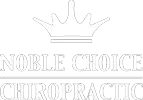Hello, I am Dr. Steph Pinnow your chiropractor for posture in Sun Prairie, WI.
We’re focusing on this video about the connection between x-rays and your bad posture. So a lot of people have been coming into our office in the last couple years complaining of neck pain, headaches, and low back issues. Mostly because a couple of years ago, they were suddenly told to go home and work, instead of being in their nice office with a good sitting desk, sit stand desk, and the monitors where they’re supposed to be.
Now, fast forward, you’re at home, you’re sitting on the couch, maybe you’re at the kitchen table, whatever you’re doing to get your work done isn’t working for your spine. So like I said, we’ve had a lot of people call in with complaints like that, but also noticeably seeing a lot more people having what we call anterior head carriage, which is where the head pokes forward like this.
I know you know what I’m talking about. I know you probably have seen a picture of yourself and you think, oh my gosh, why does my head look like that? Why does my neck look like that? It’s because of what you’re doing on a daily basis and what exactly your spine looks like.
Chiropractic X-Rays in Sun Prairie, WI
So the correlation between x-rays and posture has a lot to do with what we see when it comes to the curve. A question we’re asked pretty often is why are you taking x-rays? Do I need x-rays?
The answer is yes. We actually have a sign in our x-ray suite that you can see when you’re having your x-rays taken that says, why take x-rays? To see is to know. To not know is to guess. And we don’t guess when it comes to your health.
I hope that hits home for you, because we really do take these x-rays to your benefit so that you can see exactly what’s going on with your spine, and for us to be able to see what’s going on and be as specific as possible.
So I wanna give you a little bit of a background about what the spine should look like. Now, when you look at the spine from the side, you wanna make sure that you’ve got curves. So the tailbone should curve like this, the low back should curve this way, mid back this way, and the neck should curve this way.
The x-rays that I have pulled up here are really focusing on the neck. The theory can be applied anywhere throughout the spine.
Posture Correction in Sun Prairie, WI
Here in the neck, we’ve got an example of an almost perfect person, actually. This is a side view of the neck. The person is facing that way. And we’re seeing everything from this angle. What I really want you to pay attention to is this nice curve in the neck.
You wanna make sure you’ve got a good curve in the spine, where they’re supposed to be, so stress is evenly distributed throughout the spine. This person’s head is actually situated right above this really bony part of their neck, which is good, because that’s meant to bear the weight of their head.
This person’s head weighs, in this position, about 10 to 12 pounds. And that’s what it feels like for all of the muscles going all the way down the back of your neck, down to your spine. Every inch that the head pokes forward, like you’ve seen in your pictures, adds another 10 pounds per inch.
So we’re talking a head that could weigh, feel like it weighs at least 30 pounds instead of the 10 pounds. That’s a lot of stress on your neck, and that’s why your head is gonna start to go forward. Once that happens, everything else follows suit.
Chiropractic Posture Correction in Sun Prairie, WI
All right, there is kind of a quote or a phrase in the fitness/health world, which is that you can’t out exercise a bad diet. I like to put a spin on it and say, you can’t outstretch a bad spine. Meaning that, if this person’s neck looks like this over here, where it’s pretty straight, that head is tucked forward, they can do all of the neck exercises they want to do, chin tucks, all of that.
But until you get this curve back where it’s supposed to be, it’s not gonna do anything. That’s why we take x-rays. We need to know what your spine looks like. We need to know what to do to get that curve back, and what kind of exercises are actually going to be effective once we start making the changes in your spine.
All right, I hope that makes sense to you. I do wanna share a little fun fact. This is the same person. (gasping) I know. So this was taken three months apart. This is how she came in. This is how she came in three months later.
You can see a huge change here, not only with her spine, but her symptoms, night and day, a completely different person. So just one example of the things that we see every single day in our office.
If you’re curious about your posture, if you notice you’re that person, hunched forward, give us a call. Let us see what your spine looks like and let us help you. Thanks.




